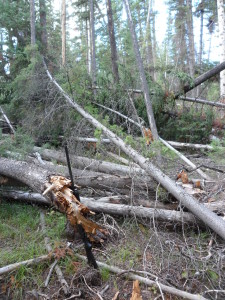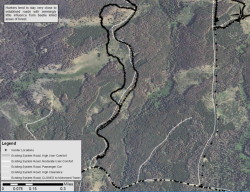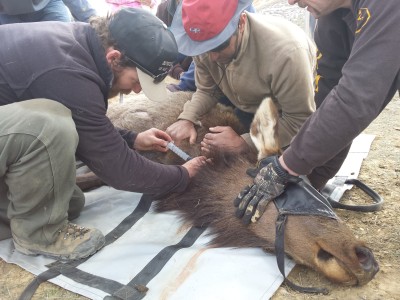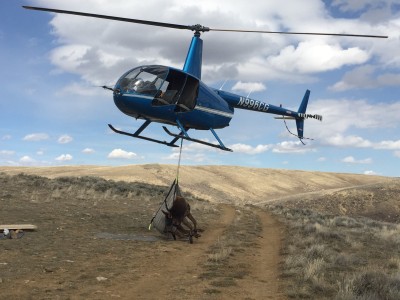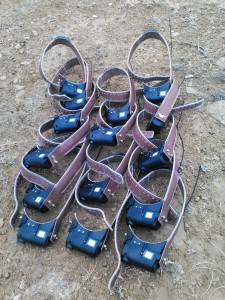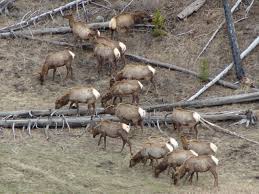For large ungulates, factors such as nutrition, energetics, and hiding and thermal cover all influence habitat use. For nearly two decades, the forests of the Rocky Mountains (USA) have been experiencing a bark beetle epidemic of severity and duration that has not been seen in over a 100 years. Between northern Colorado and southern Wyoming, the mountain pine beetle has caused mortalities in over 1.5 million hectares of lodgepole pine forest.
As the epidemic changes the structure and characteristics of the forest, the ungulates that inhabit these areas may alter their habitat use patterns to adapt to changing habitats. Moreover, ungulate distributional shifts may also lead to changes in the hunting patterns of humans, which are the primary predator of adult ungulates in affected forests. We are evaluating how the habitat use of elk is being influenced by the bark beetle epidemic in the Sierra Madre mountains of southeast Wyoming. By employing global positioning system (GPS) technology to document the movements of elk, we are quantifying how elk move about a forest with increased downed trees and understory vegetation and a potentially reduced thermal and hiding cover. To examine how elk use altered forest habitat, we are using satellite–derived land classification to categorize various stages of the beetle epidemic. In addition, we are coupling our analysis of elk habitat use with an analysis of how beetle kill is influencing hunter movements and interactions with elk. This work is done through voluntary monitoring of hunter movement paths during the fall hunting season. Our work will provide novel insights into how the bark beetle epidemic will influence elk habitat use and hunter effort, and this information will inform wildlife and land management decisions regarding ungulates and hunting in beetle-killed forests.
Contact
Bryan Lamont, Graduate Research Assistant
University of Wyoming
Dept. 3166 Wyoming Cooperative Fish and Wildlife Research Unit
1000 E. University Ave.
Laramie, WY 82071
blamont1@uwyo.edu
Project Lead
Bryan Lamont is an M.Sc. student in the Wyoming Cooperative Fish and Wildlife Research Unit and the Department of Zoology and Physiology at the University of Wyoming. Prior to beginning his research at the University of Wyoming in 2014, Bryan earned a B.S. in Wildlife Biology from Colorado State University, a B.S. in Sociology from Appalachian State University and a teaching certificate from Sierra Nevada College. MORE »

Timeline
Project began in late 2011 and anticipate results in 2017.
Funding & Partners
Wyoming Game and Fish Department ∙ Unites States Forest Service ∙ Rocky Mountain Elk Foundation ∙ Wyoming Governor’s Big Game License Coalition ∙ Saratoga Encampment Rawlins Conservation District ∙ Little Snake River Conservation District ∙ University of Wyoming ∙ United States Geologic Survey ∙ Wyoming Cooperative Fish and Wildlife Research Unit

